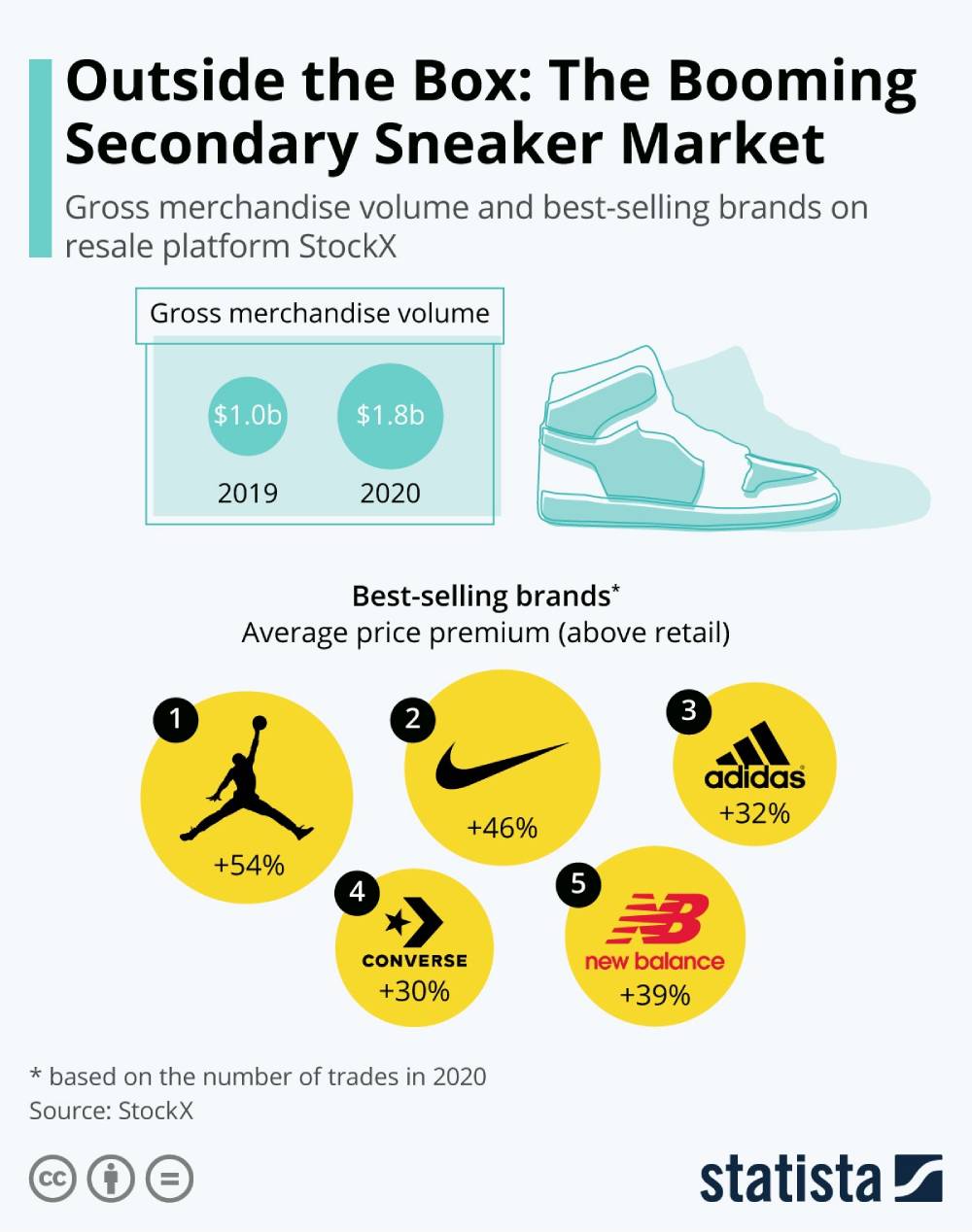In a previous blog post, we explored the concept of a circular economy and the role that Entrupy’s technology plays in support of its continued growth. In this month’s post, we’ll take a deeper dive into a specific use case that illustrates how brands and consumers can participate in the circular economy to both their benefits.
Let’s say that you own a pair of Air Jordan 1 Retro series sneakers. You’ve barely worn them, and you’ve decided it’s time to look at selling them. Your first thought is to flip them on one of the sneaker marketplaces. You know they’re in great condition and believe they should fetch a good price, but you’re also aware that prices fluctuate dramatically based on the demand at that moment in time as well as the buyers’ level of trust that the pair is, indeed, authentic. That’s a lot of variables to worry about.
Now imagine an alternative in which Nike plays a more formal role. Much like we see in the automotive market, the brand itself could take ownership of a “certified pre-owned” program. In this scenario, Nike could directly incentivize sneakerheads to bring items to branded secondary-market stores which could be online, brick-and-mortar or both. Nike staff would be the “source of truth” for the items’ value, and your item would be appraised according to the fair market value across pre-owned marketplaces.
Already, it’s a much less risky proposition, but what if Nike sweetened the pot by offering a premium, say, giving the customer a coupon worth 2 to 5 percent more than the item’s marketplace value.There’d likely be no doubt in your mind that you’re getting the greatest value from your collection, and you could confidently make the trade.
We can see there’s clear value for you, the sneaker owner/seller. What does Nike get out of the deal? Let’s break it down:
- Increased customer loyalty:By giving its customers a way to get value from brand items that they no longer need, Nike is setting the stage for a virtuous circle in which each item a customer buys adds to their incentive to buy even more.
- Greater environmental responsibility:The raw materials from which each pair of sneakers is created are sourced from all over the world, and even if various parts may theoretically be sustainable, there’s no denying each new pair created has its own environmental footprint (no pun intended). By taking back the items they’ve produced and creating a system that encourages renewal and reuse of each item and its parts, Nike could significantly increase the sustainability of its operations. Adding to this benefit is the potential to receive government-supported incentives such as tax credits based on ESG scores. of receiving Of course governments across the world are incentivising companies by providing tax credits on their ESG score.
- Creation of a new revenue stream:The third most important one from Nike’s perspective is that it allows them to get into the fast-growing, “Certified, Pre-Owned” market, which is expected to grow at a pace of 15 to 20 percent a year, reaching an estimated $100 billion by 2025 (Source: https://www.statista.com/chart/24313/stockx-gross-merchandise-volume/)

Entrupy’s sneaker authentication and fingerprinting technologies would enable brands to ensure only authentic items are accepted into their pre-owned program. Further, the identity of each time would be recorded in a way that can be re-confirmed in the event of future trades. It’s a win-win for the brand, their customers and even the environment.
To learn more about how Entrupy helps brands and customers benefit from these types of sustainable business models, write to us at [email protected].